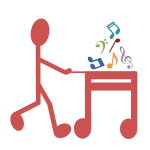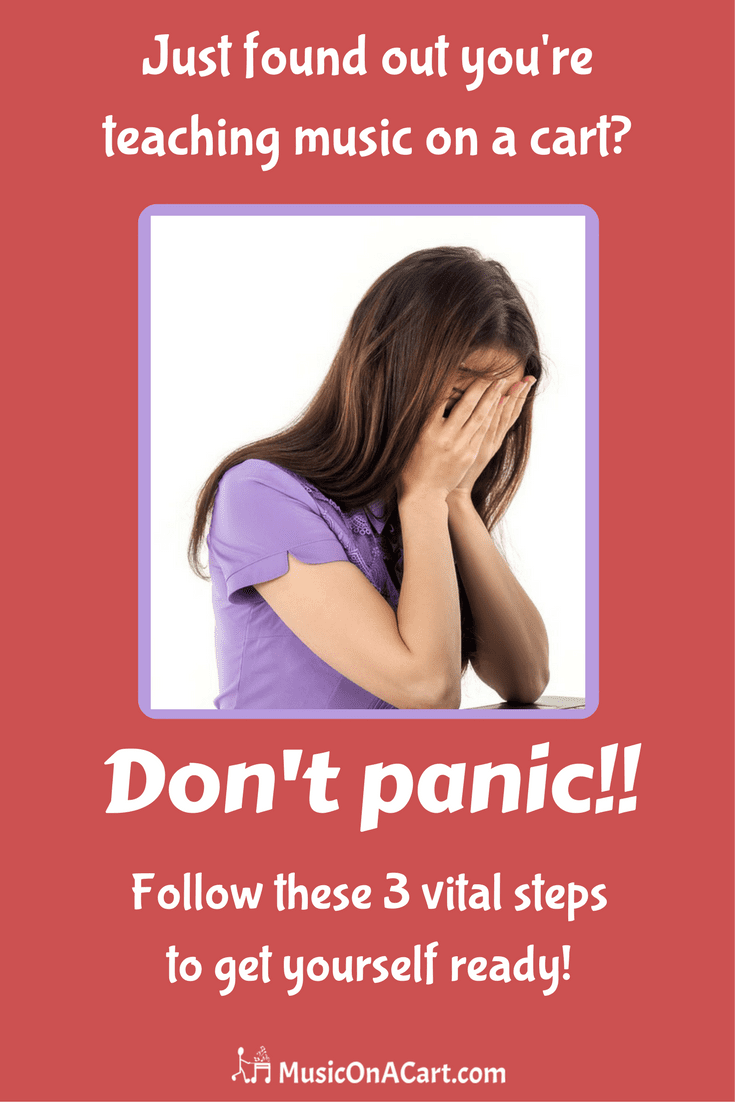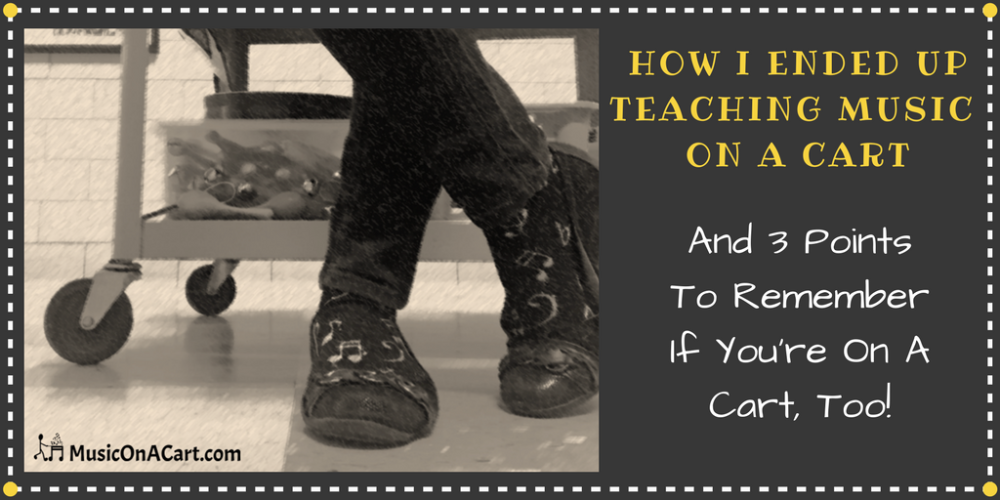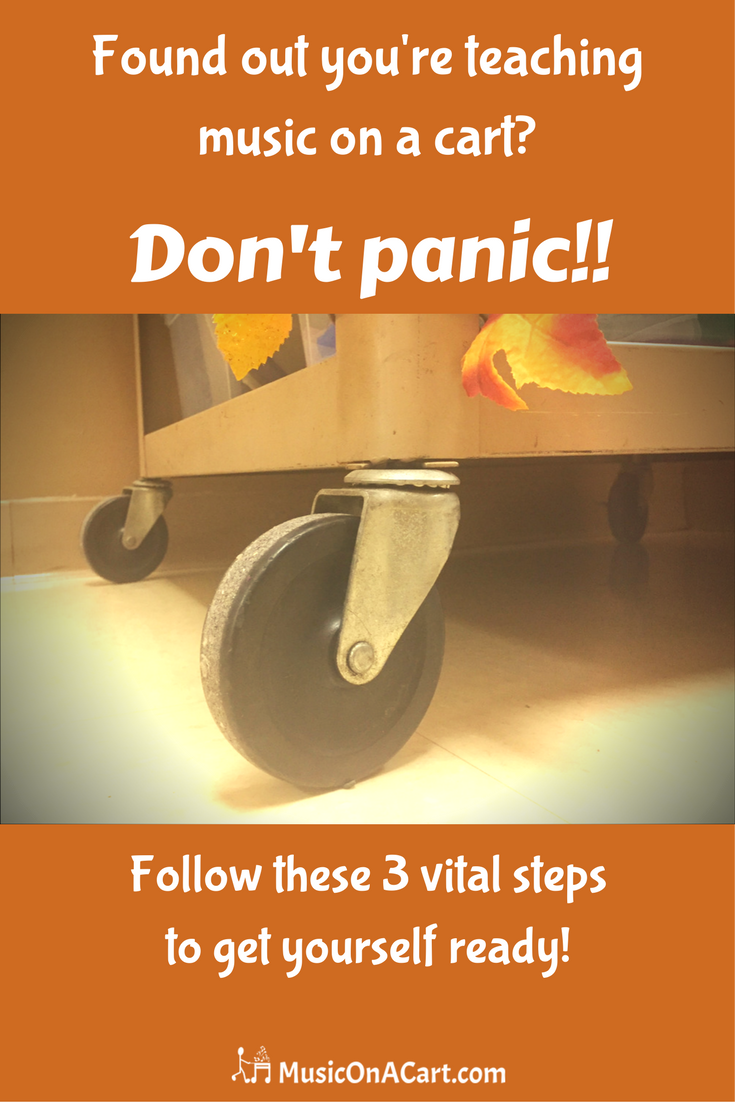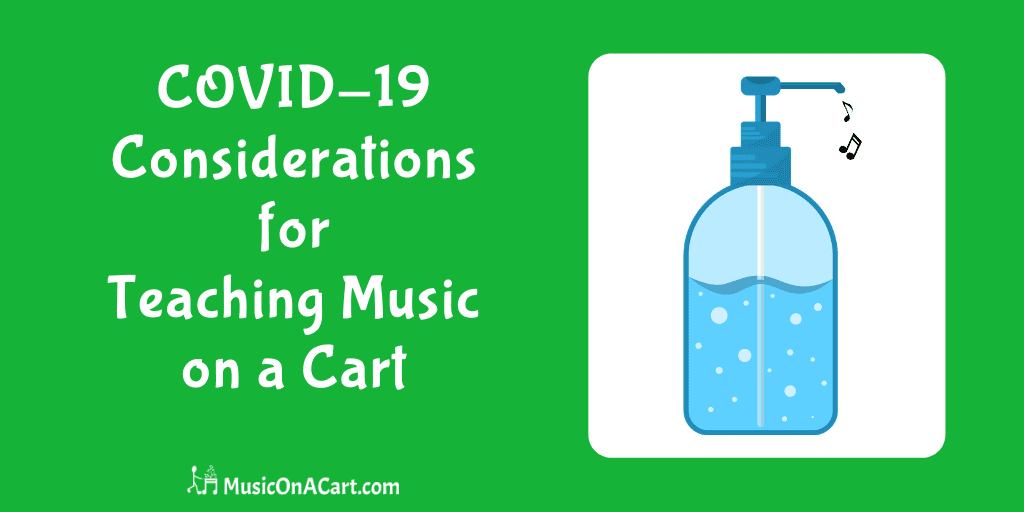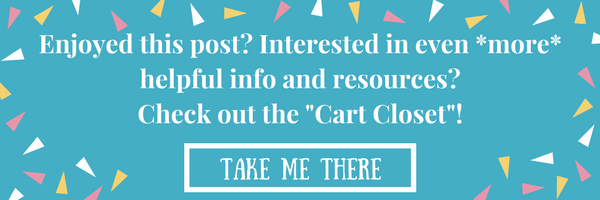*This post may contain affiliate links. If you purchase items through these links, I may receive a small commission which helps support running MusicOnACart.com at no additional cost to you.*
Year after year, I receive stories like the ones above. Stories by elementary music teachers from all across the country describing how they have lost (or are about to lose) their music teaching classroom space. Sometimes a music teacher might get temporarily kicked out of their music room for Picture Day or for several days during state testing. Other times the inconvenience is for a slightly longer duration (several months to a year or so) to accommodate school renovations or a construction project. However, the emails most common in my inbox are from the “indefinitely” camp of music teachers who have lost their music rooms and are unsure if they will ever regain a music classroom space again. The reasons for this can be many, including:
- Increased student enrollment
- Creation of a lab (STEM or maker space)
- Addition of a self-contained special needs classroom
- Addition of a BSI, ESL, or other type of special services classroom space
Finding out that you’re losing your music room and going to be teaching music on a cart is disappointing for sure. Yet when I hear about music teachers receiving such notification just a few days in advance (like I quoted above), it’s just heartbreaking! And for that unfortunate music teacher dread, disappointment, and panic start to set in.
So what do you do...other than feel completely overwhelmed? Or begin freaking out? Or a combination of BOTH?! I’ve already addressed some broader points to remember when one finds out that they'll be teaching music on a cart in this blog that shares my own cart story:
But for this blog post, I’d like to delve deeper and talk through some more detailed steps to implement that involve you, the other teachers in your school building, and your administrators. Reflecting on my own experience, I've boiled things down to 3 categories that I believe can be immensely helpful in setting yourself up for success in implementing music lessons from a cart. So let's get to it!
WARNING!!
This is going to be a lengthier post, but I want to properly give you information that'll be super helpful for your cart teaching situation! 😃
Time
Is there any time allotted for transitioning between class periods? When I was first put on a cart, my district had 3 minutes scheduled in between class periods. Then over the years as various principals came and went, it shrank down to 2, then 1, and now I have ZERO! Yup, zero transition time. So one class period technically starts the same exact time the previous one ends. Hang tight, because I’ll address this further in point #2.
Distance
Do you have to trek all the way across the school from one class to the next? Do you have classes on multiple floors? Is there an elevator to utilize? Do a walk-through the way your schedule is laid out and find out how long it takes you to get from class to class. You’ll probably need to add a minute or so to that travel time as pushing a cart slows down your usual speed compared to traveling by foot alone. If you already have a cart, go ahead and do your walk-through while pushing it...with some instruments or items to weigh it down, too.
Layout
As you perform your walk-through to check time and distance, you should also scope out the layout of the different classrooms. How have teachers arranged the desks, tables, bookshelves, and other furniture in their space? Where are the outlets located if you need to plug in speakers or charge equipment? In which area of the room can your music class take place? What kinds of distractions are in and around that area? While these are all good to address at the start of the year, be forewarned! Classroom teachers can decided to completely revamp how their room is arranged at any given point of the school year. Get a general idea of how the classrooms look initially, have a plan in place, yet keep in mind that it might change as the teacher also adjusts to the dynamics of his or her class and changes the space accordingly.
Communication! This is the key component for ANY traveling teacher. And it’s important to have open communication with your fellow colleagues within the school AND with administrators. Here’s a brief outline of some important needs and items that should be discussed:
With Teachers
Having your fellow colleagues on your side from the start will be crucial to the success of your music classes. I highly suggest communicating your needs and expectations in black and white by typing up an email and even printing out a hard copy and distributing it to teachers' mailboxes, too, as some might not catch the email. Start off your message by thanking them in advance for your entering their classroom space. Now I know that neither you nor they had any say in this arrangement, but you're offering an olive branch of peace here. Humans are very territorial, so acknowledging that you're 'intruding' into their space (even though you're an equally valid teacher who has been unexpectedly displaced) goes a long way into defusing initial awkwardness.
Then, if you have reduced or inadequate transition time between class periods like I mentioned point #1, take a moment to address the fact that while you're trying your best to travel from classroom to classroom, there will be many times in which you will not make it to their room exactly on time and thank them in advance for their understanding of that issue. I've found that addressing it from the get-go and putting it openly on the table has afforded me a lot of extra grace from teachers.
Next in your message, address the following:
- Expectations for teachers - Do you mind them being present in the room? Since music time is their prep time, I'm pretty lenient and don't mind them doing their prep work and moving about the room during music class (I just warn them of the active nature and anticipated volume level of music time, but they *love* hearing our music making!). Can you have access to their technology and/or other materials (ex. space to write on the board, access to their interactive whiteboard)? Let teachers know of your instructional needs.
- Expectations for students - Where do you want them to sit when you arrive? What materials will they need for your music class? Will they address you as lead teacher? That's very important and I make it a point to articulate to teachers that I'll take care of any behavioral issues and questions from students during music class time. I let teachers know in advance that if a student comes up to them during music time, to not answer their questions, but simply redirect that student back to me. This helps establish that even though you're in the students' classroom space, you are the head teacher in charge at that time. Establishing such boundaries is important to successful classroom management.
- Expectations for music class time - Will you use the teacher's specific classroom rules, your own music rules, or a combination of both? Are there any behavior charts or class goals the students are working towards that you should know about? Again, reiterate to the classroom teacher that you'll take care of classroom management as the head teacher in charge at music time, but offer to work with them to support the behavior and teamwork goals they're establishing in their classrooms. I use a combination of my own "star musician" program and the classroom teacher's reward system as I make it a point to play up who my selected star musicians are for the day and have students brief their teachers on how they did during music class (Click here for more classroom management strategies!). I also ensure the classroom teachers that I'll establish a calm transition at the end of music class. In other words, I never roll out of a room until students have cleaned up their space, are settled down, and calmly ready for the next direction from their classroom teacher. And the teachers are *VERY* grateful for this!
Finally, follow up with a "thank you" email about a month into the school year and give a brief rundown of what has worked well so far and maybe offer some suggestions for things you'd like to change or try. Never think you have to continue with a system that doesn't work, but be honest and open for change so you can work together with your colleagues to figure out what will work best for successful music instruction and your new cart teaching situation!
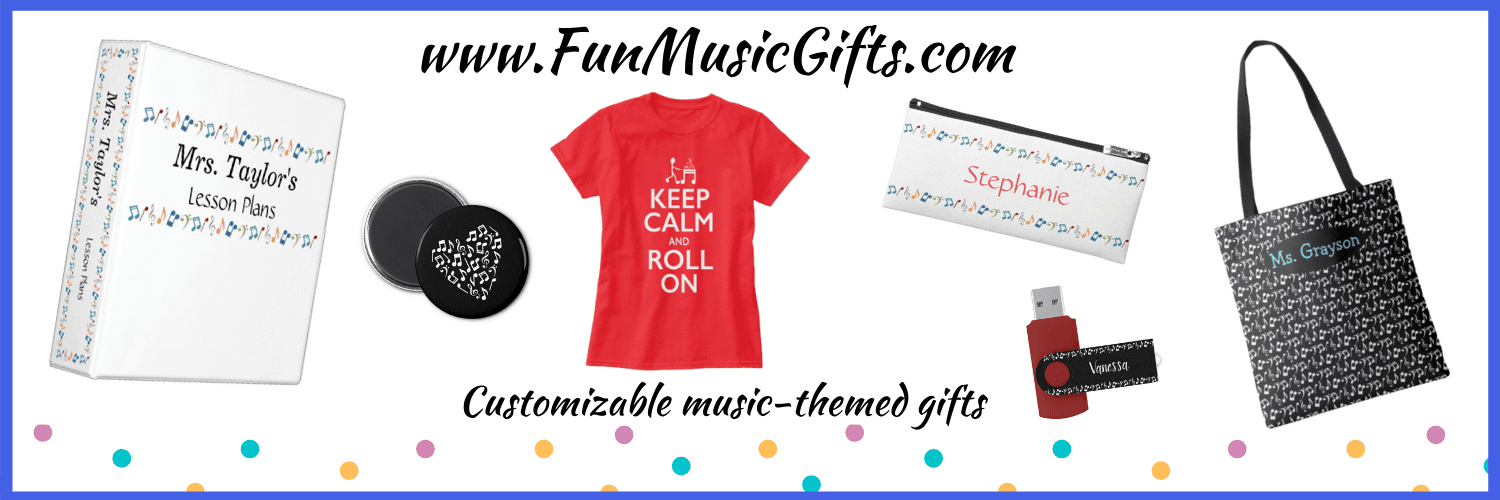
Need to add your name to supplies so they don't get lost while teaching on the go? Easily personalize and customize these music-themed items and more at www.FunMusicGifts.com
With Administrators
It's important to schedule a meeting to sit down and ask very pertinent questions to your principal or appropriate administrators once you find out that you'll be teaching from a cart. Some top things to discuss include:
- Storage needs - Where can you store all of your instruments and supplies? What closet spaces can be made available? Who else will have access to those spaces? Where will the cart be stored?
- A suitable cart - Is there one available or will a cart have to be ordered? I’ll address this a little more in point #3 below.
- A dedicated prep space - This is very important! Every teacher should be allotted some type of prep space to sit down, type up emails, grade work, etc. It might be in another teacher’s classroom, a shared office space, or to the side of a stage. When I first lost my room, I shared a prep area in the art room. The following year, when she ALSO lost her art room, we both shared a tiny side room connected to the nurse’s office. We had that arrangement until a few renovations occurred and a slightly larger office became available, which I shared with the art teacher and the ESL teacher. I now utilize a small closet, but it's enough for my materials to be stored in and for me to put a folding chair inside to sit and work on my laptop. Wherever the prep space may be, it should be a dedicated space that you can have a place to sit down at and a place for your personal belongings. Insist (nicely!) on this needed space.
If you're going to be teaching music from a cart, then of course you'll need the most optimal cart for your teaching needs and one that's best suited for maneuvering around your school's hallways and doorways. But I must warn you, bigger is NOT always better! In another blog post, I'll address what types of carts you can choose from (there are many options!), exactly what characteristics you need to look for when securing a cart, and how to fully outfit it for your teaching, but for now, consider the following:
- Size - You'll need to push this bad boy around all day, so think very carefully about the size of your cart along with the ease of maneuverability because you don't want to injure yourself. Will bending down to push it hurt your back? Is the cart already heavy even though it's completely empty? Can it easily fit through the doorways of every classroom you'll be entering?
- Storage - This is not only how many shelves are available on the cart, but the ways in which you can utilize ALL areas (inside, outside, upside, and down) of your cart. This could also include a locked storage section on your cart, if that's important to you.
- Electrical requirements - Does your cart come with an extension cord or have the ability to incorporate electrical equipment that you'll need? Will you need to put a music playing device on your cart? Bluetooth speaker? Keyboard? Laptop?
Cart preparation is a whole other discussion and I'm very excited to share with you how I've rocked out my own cart in order to successfully implement my music lesson activities! But for now, what are your thoughts? Does your teaching schedule have absolutely no transition time between periods like mine does? Have you considered writing down your expectations and sharing them (in a super kind fashion) to the teachers whose rooms you'll be teaching in? Have your administrators given you a prep space? Have you considered sprucing up your cart to make it practical, but fun? I'd love to hear your thoughts and ideas in the comments below!
Encouraging you to rock as you roll,
Connect:
